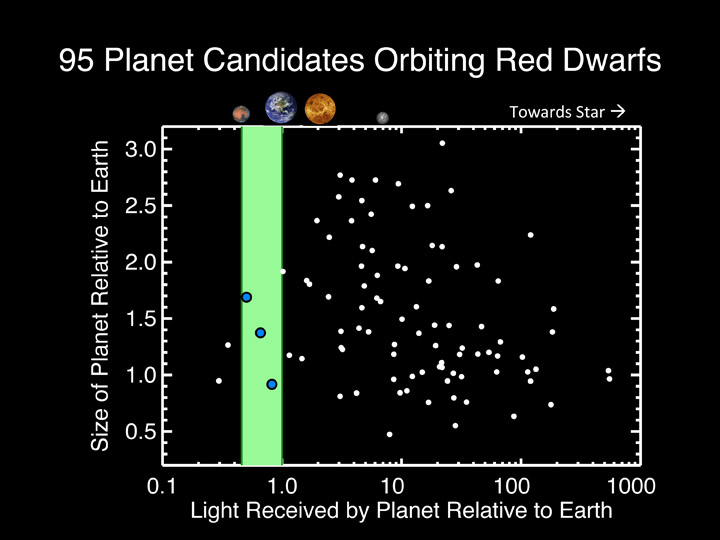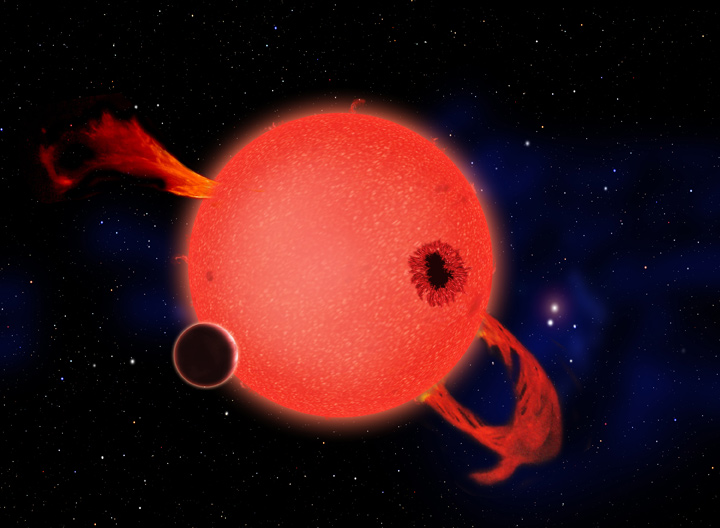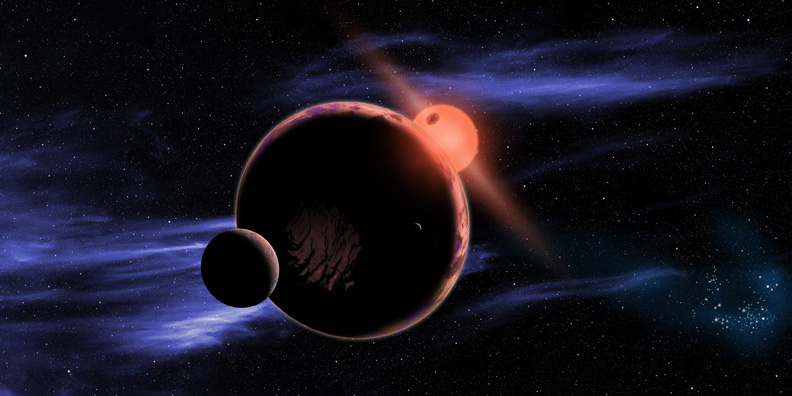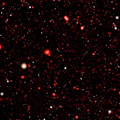Image List
-

By analyzing publicly available Kepler data, CfA astronomers identified 95 planetary candidates circling red dwarf stars. Of those, three orbit within the habitable zone (marked in green) - the distance at which they should be warm enough to host liquid water on the surface. Those three planetary candidates (marked with blue dots) are 0.9, 1.4, and 1.7 times the size of Earth. In this graph, light received by the planet increases from left to right, and therefore distance to the star decreases from left to right. Planet size increases from bottom to top.
C. Dressing (CfA) -

When it's young, a red dwarf star frequently erupts with strong ultraviolet flares as shown in this artist's conception. Some have argued that life would be impossible on any planet orbiting in the star's habitable zone as a result. However, the planet's atmosphere could protect the surface, and in fact such stresses could help life to evolve. And when the star ages and settles down, its planet would enjoy billions of years of quiet, steady radiance.
David A. Aguilar (CfA) -

This artist’s conception shows a hypothetical habitable planet with two moons orbiting a red dwarf star. Astronomers have found that 6 percent of all red dwarf stars have an Earth-sized planet in the habitable zone, which is warm enough for liquid water on the planet’s surface. Since red dwarf stars are so common, then statistically the closest Earth-like planet should be only 13 light-years away.
David A. Aguilar (CfA) -

This animation begins with a typical view of the night sky. However, many more stars lie hidden from view - too faint and red for the human eye to detect. If you could make those stars brighten, you would find that our solar system is surrounded by hundreds of those red dwarf stars. Three out of every four stars in our neighborhood are red dwarfs. And since 6 percent of all red dwarfs have Earth-like worlds, the closest habitable planet could be only 13 light-years away.
D. Aguilar & C. Pulliam (CfA)